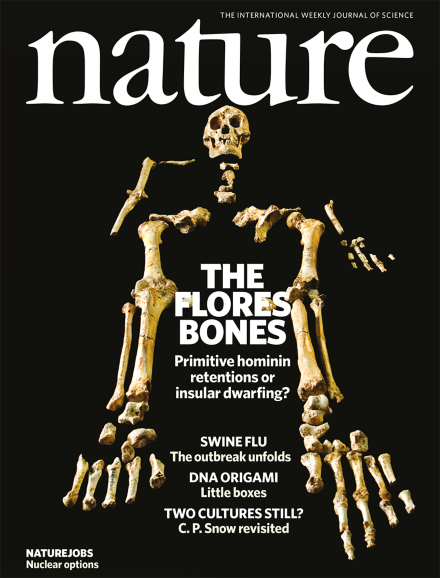Volume 459 Issue 7243, 7 May 2009
Authors
Editorial
Research Highlights
Journal Club
News
News in Brief
News Feature
Correspondence
Books & Arts
News & Views
-
Homo floresiensis from head to toe
Collection:
Review Article
Article
Letter
-
The foot of Homo floresiensis
Collections:

